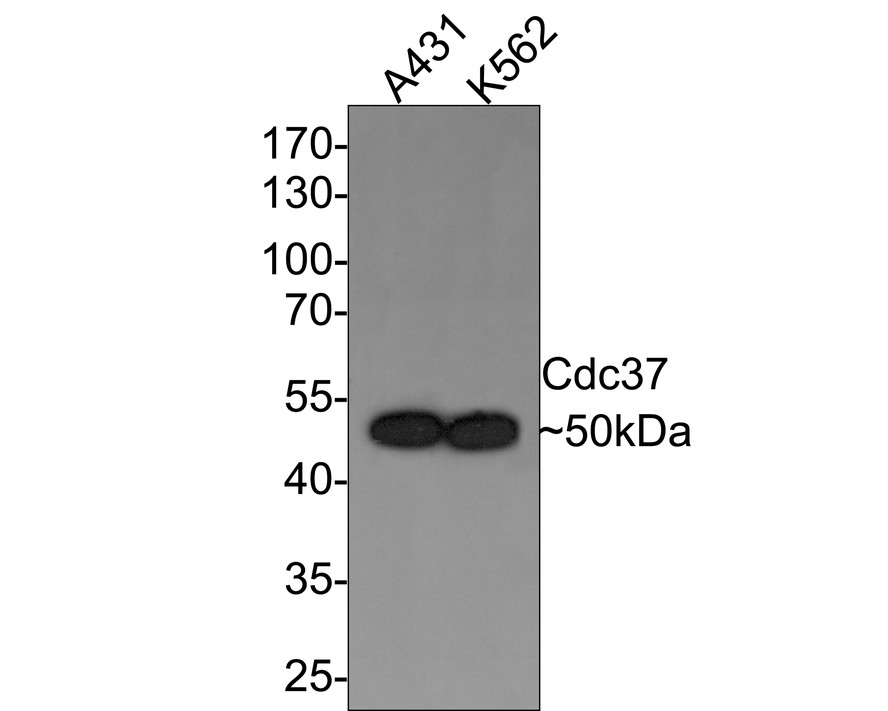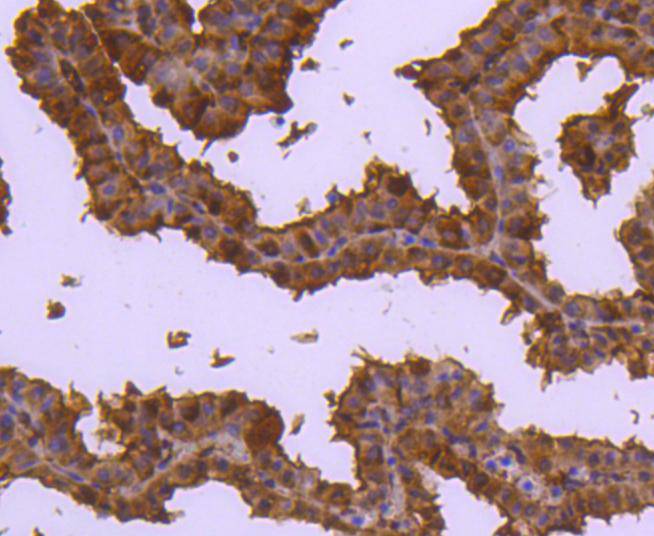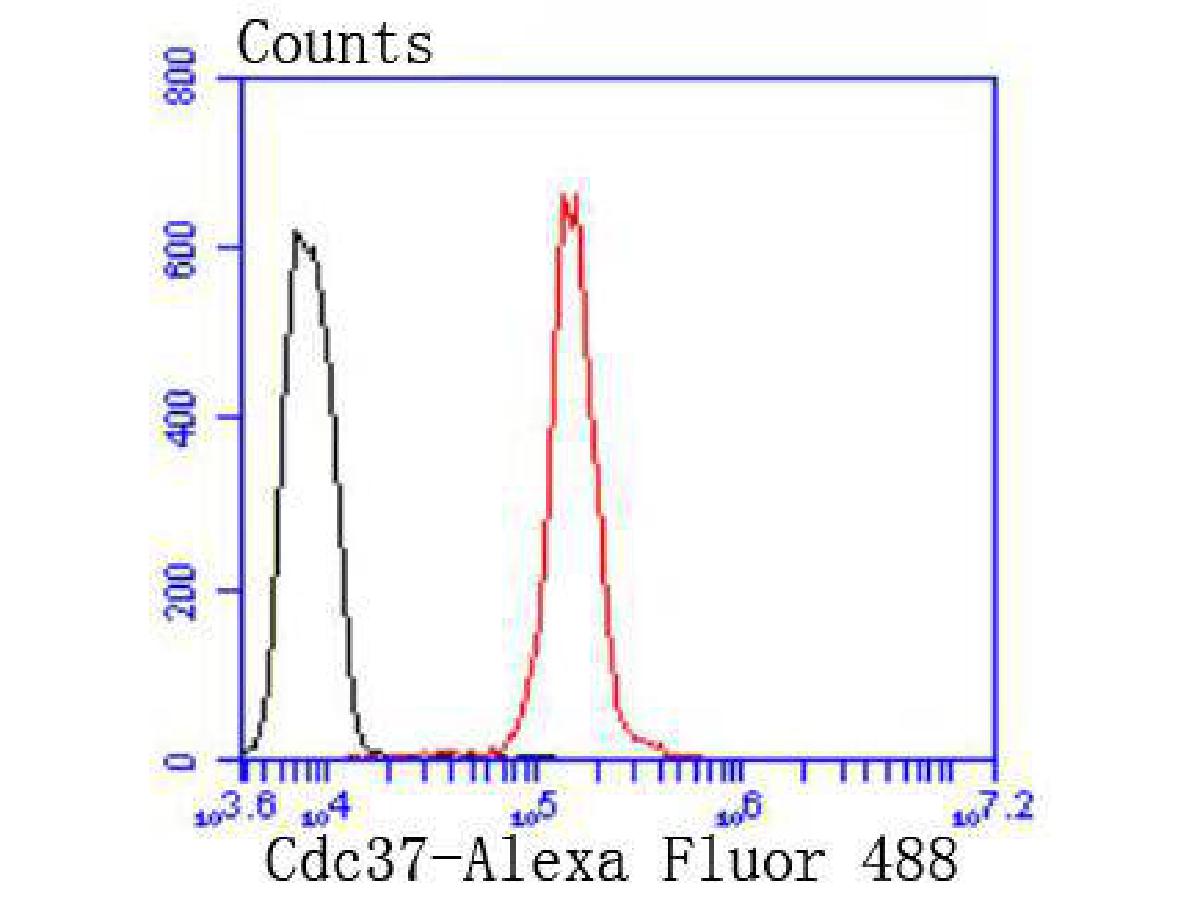Cdc37 Recombinant Rabbit Monoclonal Antibody [JJ087-06]

cat.: ET1701-14
| Product Type: | Recombinant Rabbit monoclonal IgG, primary antibodies |
|---|---|
| Species reactivity: | Human, Mouse, Rat |
| Applications: | WB, IHC-P, FC, IP |
| Clonality: | Monoclonal |
| Clone number: | JJ087-06 |
| Form: | Liquid |
| Storage condition: | Shipped at 4℃. Store at +4℃ short term (1-2 weeks). It is recommended to aliquot into single-use upon delivery. Store at -20℃ long term. |
| Storage buffer: | 1*TBS (pH7.4), 0.05% BSA, 40% Glycerol. Preservative: 0.05% Sodium Azide. |
| Concentration: | 1ug/ul |
| Purification: | Protein A affinity purified. |
| Molecular weight: | Predicted band size: 44 kDa |
| Isotype: | IgG |
| Immunogen: | Synthetic peptide within Human Cdc37 aa 1-50 / 378. |
| Positive control: | A431 cell lysate, K562 cell lysate, mouse liver tissue, mouse placenta tissue, Hela. |
| Subcellular location: | Cytoplasm. |
| Recommended Dilutions:
WB FC IHC-P IP |
1:1,000-1:5,000 1:50-1:100 1:50-1:200 Use at an assay dependent concentration. |
| Uniprot #: | SwissProt: Q16543 Human | Q61081 Mouse | Q63692 Rat |
| Alternative names: | CDC 37 Cdc37 CDC37 cell division cycle 37 homolog CDC37 cell division cycle 37 S cerevisiae homolog CDC37 cell division cycle 37, S cerevisiae, homolog of Cdc37 homolog CDC37 protein CDC37_HUMAN CDC37A cell division cycle 37 Cell division cycle 37 homolog Hsp90 chaperone protein kinase targeting subunit Hsp90 chaperone protein kinase targeting subunit p50Cdc37 Hsp90 chaperone protein kinase-targeting subunit Hsp90 co chaperone Cdc37 Hsp90 co-chaperone Cdc37 p50 p50Cdc37 S cerevisiae hypothetical protein CDC37 |
Images

|
Fig1:
Western blot analysis of Cdc37 on different lysates with Rabbit anti-Cdc37 antibody (ET1701-14) at 1/500 dilution. Lane 1: A431 cell lysate Lane 2: K562 cell lysate Lysates/proteins at 10 µg/Lane. Predicted band size: 44 kDa Observed band size: 50 kDa Exposure time: 2 minutes; 10% SDS-PAGE gel. Proteins were transferred to a PVDF membrane and blocked with 5% NFDM/TBST for 1 hour at room temperature. The primary antibody (ET1701-14) at 1/500 dilution was used in 5% NFDM/TBST at room temperature for 2 hours. Goat Anti-Rabbit IgG - HRP Secondary Antibody (HA1001) at 1:300,000 dilution was used for 1 hour at room temperature. |

|
Fig2: Immunohistochemical analysis of paraffin-embedded mouse liver tissue using anti-Cdc37 antibody. The section was pre-treated using heat mediated antigen retrieval with Tris-EDTA buffer (pH 9.0) for 20 minutes.The tissues were blocked in 1% BSA for 30 minutes at room temperature, washed with ddH2O and PBS, and then probed with the primary antibody (ET1701-14, 1/50) for 30 minutes at room temperature. The detection was performed using an HRP conjugated compact polymer system. DAB was used as the chromogen. Tissues were counterstained with hematoxylin and mounted with DPX. |

|
Fig3: Immunohistochemical analysis of paraffin-embedded mouse placenta tissue using anti-Cdc37 antibody. The section was pre-treated using heat mediated antigen retrieval with Tris-EDTA buffer (pH 9.0) for 20 minutes.The tissues were blocked in 1% BSA for 30 minutes at room temperature, washed with ddH2O and PBS, and then probed with the primary antibody (ET1701-14, 1/50) for 30 minutes at room temperature. The detection was performed using an HRP conjugated compact polymer system. DAB was used as the chromogen. Tissues were counterstained with hematoxylin and mounted with DPX. |

|
Fig4: Flow cytometric analysis of Cdc37 was done on Hela cells. The cells were fixed, permeabilized and stained with the primary antibody (ET1701-14, 1/50) (red). After incubation of the primary antibody at room temperature for an hour, the cells were stained with a Alexa Fluor®488 conjugate-Goat anti-Rabbit IgG Secondary antibody at 1/1,000 dilution for 30 minutes.Unlabelled sample was used as a control (cells without incubation with primary antibody; black). |
Note: All products are “FOR RESEARCH USE ONLY AND ARE NOT INTENDED FOR DIAGNOSTIC OR THERAPEUTIC USE”.